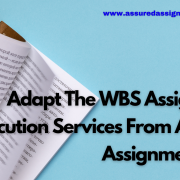Learning outcomes for the unit On successful completion of the unit you should be able to: 1. Demonstrate practical understanding of the role and associated strengths and limitations of internal and external change agents in different change consultancy contexts. 2. Apply and analyse relevant planned and emergent change management frameworks and models in a range of organisational contexts.
3. Articulate the key features, applications, limitations and linkages between different approaches to planned change including 4. Demonstrate an informed understanding of the nature and operation of the client- consultant relationship with associated, contractual,
communication and ethical considerations and how this impacts the success of consultancy interventions in different organisational contexts. 5. Evaluate high- level change drivers in the digital network economy, possible impacts and change management and leadership approaches required to ensure balanced societal, environmental and economic outcomes in an interconnected global environment. 6. Demonstrate ability to undertake consulting, applied or case study based research and analysis. Assignment 1: Individual essay on resistance to change: Oreg, Bartunek, Lee & Do write: ‘…Several studies have considered negative activated affective responses to change, such as anger (e.g., Fugate, Kinicki & Scheck, 2002; Kiefer, 2005) stress (e.g., Amiot et al., 2006; Bordia, Jones, Gallois, Callan & Difonzo, 2006), and active aggression (e.g., Ramirez & Bartunek, 1989), as forms of resistance. Individual recipients who get angry, upset, or
irritated by a change event (e.g., announcements and actions by change agents) may actively spread critical and debasing information and opinions about the change (Maynes & Podsakoff, 2014; Ramirez & Bartunek, 1989). Activated change resistance may also be expressed in turnover (e.g., Fried, Tiegs, Naughton, and Ashforth, 1996; Fugate, Harrison, & Kinicki, 2011; Schweiger & Densi, 1991). Such turnover may have significant negative consequences for change, because it incurs additional costs for recruiting and training new employees (e.g.Shaw, Delery, Jenkins & Gupta, 1998) and poorer organizational and team performance (especially in knowledge- oriented organizations; Koys, 2001; Ton & Huckmann, 2008). It also increases remaining employees’ workload, lowers morale, and may have negative contagion effects (Bartunek, Huang & Walsh, 2008; Felps et al., 2009). Change resistance is therefore mostly detrimental, at least in the short tem, to both the organization and its members (see Figure 2). It aims at disrupting the current change and can sometimes lead to disruptions of the organization’s functioning, such as in the case of strikes (e.g. Kanter, Stein & Jick, 1992). Oreg, S., Bartunek, J., Lee, G., Do, B (2018) An Affect-Based Model of Recipients’ Responses to Organizational Change Events, Academy of Management Review, Vol.43, No. 1. pp. 65-86. Do you agree with Oreg, Bartunek, Lee and Do’s proposition that ‘change resistance
is therefore mostly detrimental, at least in the short term, to both the organization and its members(see Figure 2). Why or why not? Are there any benefits of change resistance for firms, change agents and the recipients of change? Assignment 2: Team case study analysis
This assignment has two parts: Part A: A team case study report, follow the instructions below. Part B: An individual reflective journal, follow the instructions below. Students should organise themselves into teams of four. External students are encouraged to work with internal students on this assessment task. Read Case Study 1: Leading an Ethical Business: Dilmah Tea Waddell, D et al (2017) Organisational Change: Development & Transformation, Cengage Learning, pp. 450-451. Prepare a case study analysis report on this case: What are the key issues that this case raises for managing organisational change? Does your team consider that this firm’s focus on ethics and corporate social responsibility is not feasible or appropriate for businesses operating in other industries such as financial services, manufacturing, transport, media. Why or why not? Can your team recommend ways that other businesses could adopt some of the principles and practices of the case study firm?

 Strategic Planning in Dynamic Environment
Strategic Planning in Dynamic Environment 








